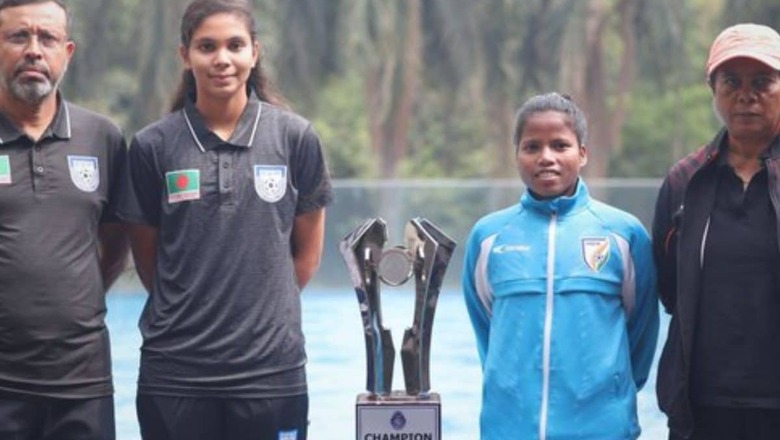
views
The Indian football team will be out to break a jinx as it takes on hosts Bangladesh in the SAFF U-19 Women’s Championship final here on Thursday.
Despite improvement in women’s football, India somehow hold a dismal record in this age-group in SAFF.
The title has eluded India on more than one occasion, the latest being the SAFF U20 Women’s Championship in Dhaka last year, when Bangladesh pipped them to win the trophy.
The upcoming final will definitely be a huge opportunity for India to put past records on the burner and retain the title.
The Young Tigresses will enter the final match with a strong determination to win the championship title and set the records straight from the Indian perspective.
In the group stage, India won comfortably against Bhutan (10-0) and Nepal (4-0) but lost to Bangladesh by a solitary goal before entering the final as the second-place finishers in the group.
Apart from having a tight defence and a balanced midfield, India enjoy good attacking qualities with forwards Pooja and Sulanjana Raul and wingers Neha and Sibani Devi putting up a commendable show.
However, it will definitely not be easy to topple the hosts, who beat India in the group league earlier this week. No one knows it better than India’s head coach, Sukla Dutta.
“I’m truly not pleased that India have been losing to Bangladesh for the past three years, but tomorrow will be the time to change that. I am sure both teams will put in equal efforts, but the team who score first will likely emerge champion, as the confidence to score more will start from there,” she said ahead of the Bangladesh clash.
“I understand there will be huge support for Bangladesh, but we’ll only concentrate on our own game,” she said.
Having already played against Bangladesh in the group stage, the India head coach knows how to handle the situation.
“We know exactly how they play. But there’s no doubt they’re a good side. I have instructed my players to stay focused on their positions and prioritise man-marking.
“It’s crucial to cover the midfield more effectively because if we disrupt their ball distribution in that area, we can perform even better.”
















Comments
0 comment